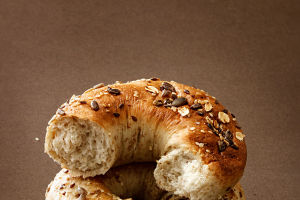Chocolate: A Sweet History
Chocolate is a beloved treat for many people around the world. It is a ubiquitous ingredient in today's food industry, used to make chocolate candy, add a unique flavor to cakes and snacks, and even turned into a sweet drink. Chocolate has been a part of the human diet for at least 700 years, and its history is fascinating.
In the 18th century, European confectioners started using chocolate as an ingredient in sweets, and chocolate candy quickly became popular, becoming one of the favorite sweets of Europeans.
In the 19th century, with the development of industrialization, chocolate candies began to be mass-produced and became popular all over the world.
Today, chocolate is divided into three main types: dark chocolate, milk chocolate, and white chocolate, with dark being the highest in cocoa and lowest in sugar, while white chocolate does not contain cocoa powder but is instead a mixture of cocoa butter, sugar, and milk. Milk chocolate, as the name suggests, contains milk in addition to cocoa.
While high-quality chocolate today has a silky smooth and melt-in-the-mouth texture, for a long time in chocolate's history, it was rough, greasy, and even had cocoa bean oil on the surface. It was not until the application of cocoa bean defatting technology in the 19th century that the taste of chocolate was greatly improved.
Chocolate candy is not only delicious but also nutritious. It is rich in sugar, protein, and fat, with fat content as high as one-third and sometimes even forty percent.
Additionally, most of the fat in chocolate candy is cocoa butter, which has a melting point close to the body temperature of humans, making it easy to digest and absorb, and high in calories.
Chocolate candy also contains vitamins, has a strong fragrance that can arouse people's appetite, and is especially suitable for children, weak and engaged in navigation, aviation personnel, and athletes.
Aside from its taste and nutritional value, chocolate also has some interesting properties and uses. For example, chemicals in chocolate stimulate the brain to release dopamine and other beneficial neurotransmitters, improving mood and emotions.
Chocolate also contains catechin, which can inhibit the growth of bacteria and reduce harmful bacteria in the oral cavity, thus helping to prevent dental caries.
In Europe, chocolate sculpture is an art form where artists use chocolate to create sculptures of various shapes, such as figures, animals, and buildings, showcasing the diversity and artistic value of chocolate.
Chocolate can also be used as an ingredient in cooking and baking, adding a unique flavor and texture to desserts, biscuits, cakes, and other foods.
Chocolate has a rich and fascinating history, and its popularity as a treat continues to grow. From its humble beginnings as an ingredient in sweets to becoming a global favorite, chocolate has come a long way. With its unique taste, rich nutrient content, and interesting properties, it is no wonder that so many people love this sweet treat.


